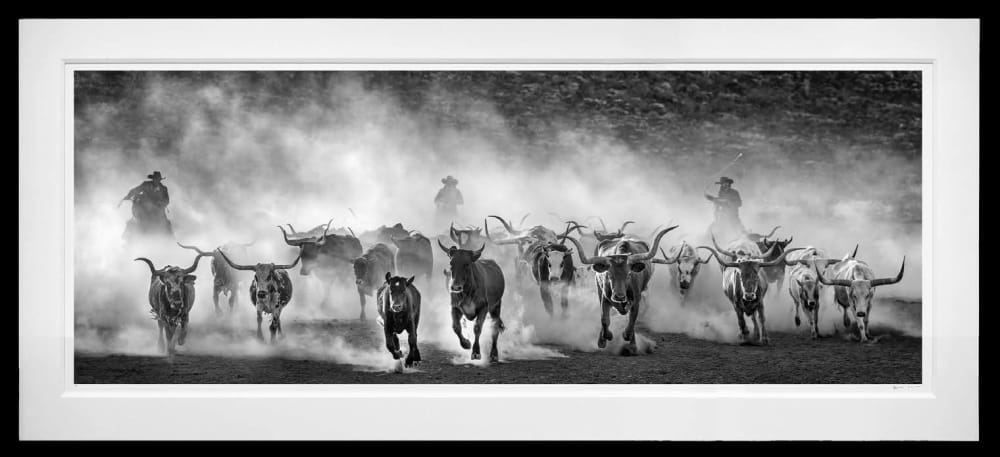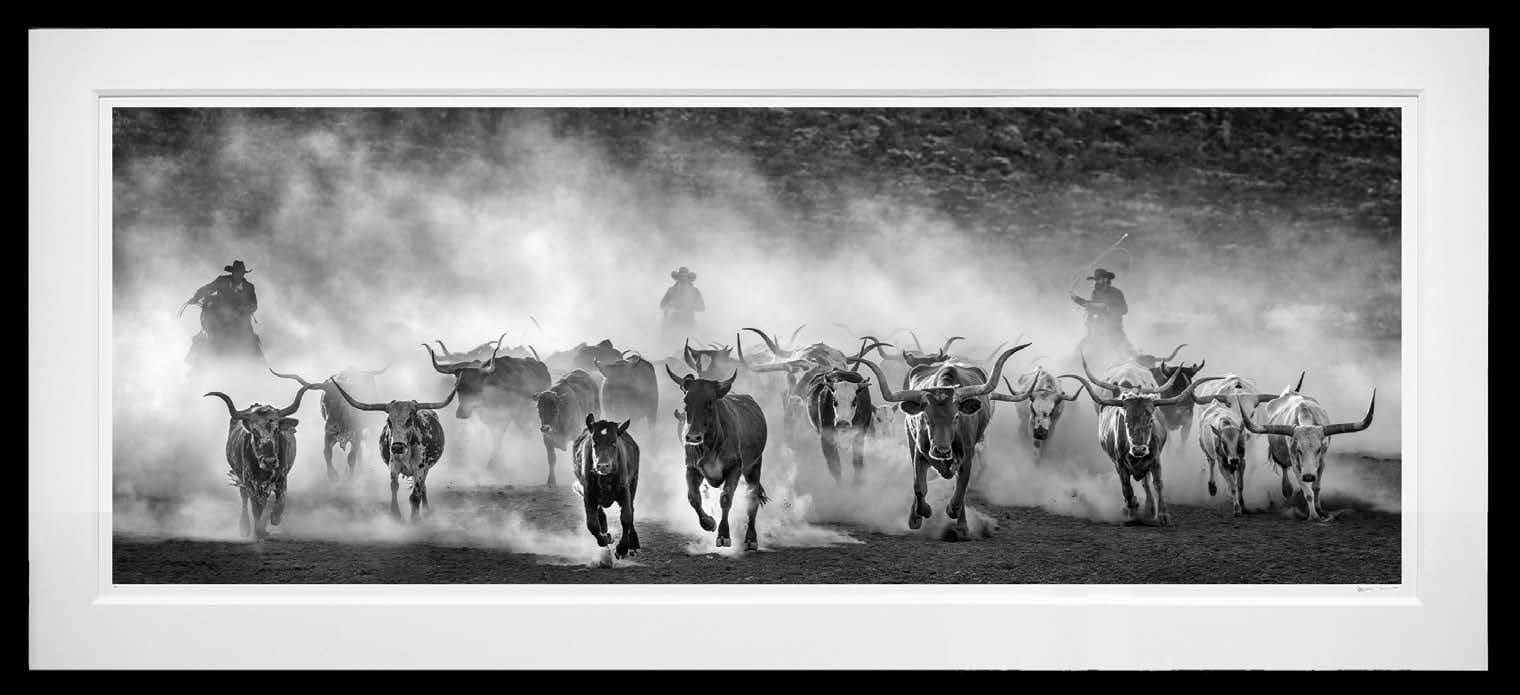David Yarrow Scottish, b. 1966
Lonesome Dove, 2024
Archival Pigment Print
Available in two sizes:
Standard - 43 x 90 inches
Large - 52 x 115 inches
Standard - 43 x 90 inches
Large - 52 x 115 inches
Edition of 12 plus 3 artist's proofs
Signed, editioned and dated on bottom
Lonesome Dove West Texas, Texas 2024 The quiet comfort of being alone on the move, with the sense of security offered by a saddle, were seemingly attractive to cattle drivers...
Lonesome Dove
West Texas, Texas 2024
The quiet comfort of being alone on the
move, with the sense of security offered
by a saddle, were seemingly attractive to
cattle drivers heading north from Texas
in the second half of the 19th century.
Ostensibly, it was a lonely and poorly paid
job, conducted in tough conditions, and
while the cowtowns at the end of the road
offered every vice, the original cowboy’s
life delivered little consistent joy. The life
imbalances are easier to consume in a
modern Taylor Sheridan production than
they were when lived out for real.
Louis L’Amour- the doyen of
contemporary Western novels - believed
that the self-image of the first cowboys
was influenced by the “code of the
cavalier” that emerged in 19th century
writers such as Sir Walter Scott. The
commitment to duty, and the sense of
pride that became integral to the lore
of the frontier cowboys, came from
somewhere and L’Amour suggests that
it came from stories and folklore passed
down the ages.
If he was right, novels such as Ivanhoe
have played a material role in the
evolution of Americana. The early
cowboys were rough, wanderlust
characters often possessing no moral
compass, but they had a code of honour
that history now looks fondly on and this
has propelled the cowboy image from a
shiftless, unkempt character to the noble
good guy and most enduring symbol of
the United States.
That extraordinary shift in perception
is here to stay and that works for me. To
spend time with proper cowboys - as we
often do in West Texas - is to immerse
oneself in a culture with duty, manners
and commitment at its heart. Over and
above that, to watch a cattle drive live,
in its birthplace, is one of the great
spectacles I know.
West Texas, Texas 2024
The quiet comfort of being alone on the
move, with the sense of security offered
by a saddle, were seemingly attractive to
cattle drivers heading north from Texas
in the second half of the 19th century.
Ostensibly, it was a lonely and poorly paid
job, conducted in tough conditions, and
while the cowtowns at the end of the road
offered every vice, the original cowboy’s
life delivered little consistent joy. The life
imbalances are easier to consume in a
modern Taylor Sheridan production than
they were when lived out for real.
Louis L’Amour- the doyen of
contemporary Western novels - believed
that the self-image of the first cowboys
was influenced by the “code of the
cavalier” that emerged in 19th century
writers such as Sir Walter Scott. The
commitment to duty, and the sense of
pride that became integral to the lore
of the frontier cowboys, came from
somewhere and L’Amour suggests that
it came from stories and folklore passed
down the ages.
If he was right, novels such as Ivanhoe
have played a material role in the
evolution of Americana. The early
cowboys were rough, wanderlust
characters often possessing no moral
compass, but they had a code of honour
that history now looks fondly on and this
has propelled the cowboy image from a
shiftless, unkempt character to the noble
good guy and most enduring symbol of
the United States.
That extraordinary shift in perception
is here to stay and that works for me. To
spend time with proper cowboys - as we
often do in West Texas - is to immerse
oneself in a culture with duty, manners
and commitment at its heart. Over and
above that, to watch a cattle drive live,
in its birthplace, is one of the great
spectacles I know.





